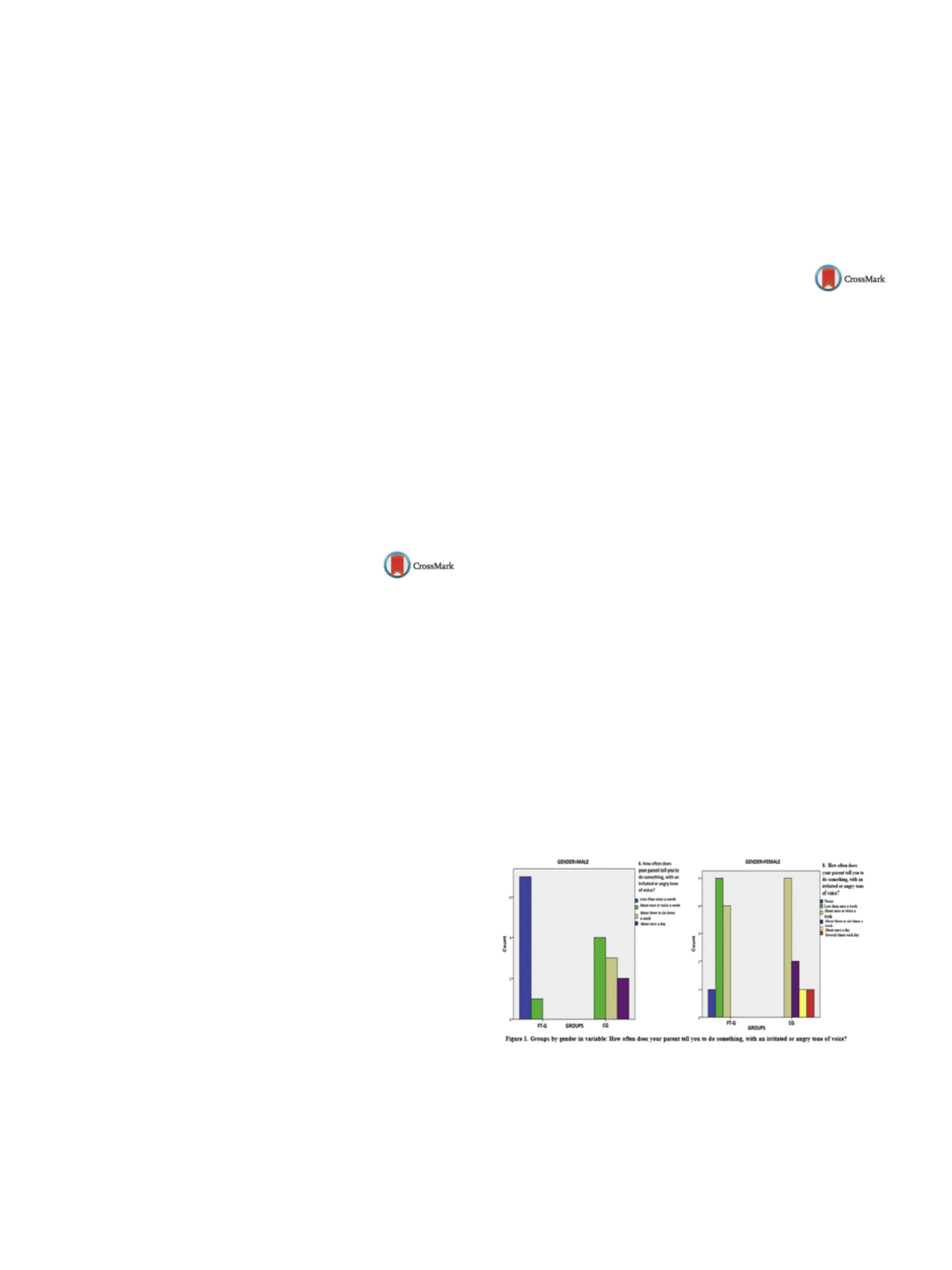

S262
25th European Congress of Psychiatry / European Psychiatry 41S (2017) S238–S302
Chronotype is defined as individual circadian preference, most
often represented on the continuum between two extremes:
morningness and eveningness. Growing number of studies show
associations between circadian preference and various psy-
chopathological symptoms. Eveningness has been shown to be
related with depressiveness in non-clinical population, while
mornigness has been presented as protective factor. Schizotypy
is a schizophrenic-spectrum personality trait linked with a ten-
dency to eccentricity, magical thinking and unusual experiences.
Features of schizotypy has been identified in patients with mood
disorders i.e bipolar disorder. While there is growing number of
studies evaluating associations between chronotype and affective
symptons, to our best knowledge there are no studies adressing the
issue of association between schizotypy and circadian preferences.
A total of 887 healthy individuals took part in the web-based study.
Chronotype has been assessed with the use of Composite Scale of
Morningness. Schizotypy has been measured with the use of the
enlarged version of The Oxford-Liverpool Inventory of Feelings and
Experiences (O-LIFE). Analysis revealed significant positive corre-
lations between cognitive disorganization, introvertive/anhedonia,
implusiveness/nonconformity and eveningness. To our best knowl-
edge, results indicate for the first time relationship between
eveningness and schizotypy, measured by O-LIFE.
Disclosure of interest
The authors have not supplied their decla-
ration of competing interest.
http://dx.doi.org/10.1016/j.eurpsy.2017.02.071EW0458
The effect of treatment recognition
based on mental conscious on
decreasing depression and stress on
those affected by lupus disease and by
3 months follow up
N. Farrokhi
1 ,∗
, A . Golmohammadi
2 , S. Ghahari
31
Young reseachers club of Islamic Azad University, Roudehen Branch,
Clinical Psychology, Tehran, Iran
2
Faculty of Psychology, University of Isfahan, Clinical Psychology,
Eisfahan, Iran
3
Assistant professor of Mental Health, University of Medical Sciences
IUMS. Center of Excellence in psychiatry, School of Behavioral
Sciences and Mental Health, Clinical Psychology, Tehran, Iran
∗
Corresponding author.
Introduction
Systemic lupus erythemataus is a chronic inflam-
matory disease of the multimedia system that appear on renal
involvement, cortical-mucous, bloody, and neurotic.
Aim
The target of this study is to examine the effect of treatment
recognition based on mental conscious on decreasing depression
intensity on lupus disease and three month follow up.
Method
The method of study is semi test by targeted random
selection in access in which we have used of pre-test by observe
group. Volume of sample includes 200 women afflicted by lupus
and among them about 20 ones were ready to cooperate and in
study duration were in related improvement situation and has
been evaluated. They have been grouped in the two test group
(ten persons) and observe one (10 persons) in which two persons
has been excluded from test group and we have excluded two
persons from observe group, too. Test group have received eight
MBCT treatment sessions but observe group has not received any
treatment. Beck depression questionnaire (BDI-II) and brief signs
of psychology questionnaire (BSI-53) has been performed as pre-
test and after clinical test, post-test and three-month-follow up has
been done. We have used of descriptive statics and co-variance for
analysis.
Results
Findings has shown that treatment recognition based on
mental consciousness, meaningfully have an effect on decreasing
remained signs of depression.
Conclusion
Three-month-follow up has shown that treatment
recognition based on mental consciousness, had an effect on
depression disorder, anxiety disorder, and lupus patients.
Keywords
Treatment recognition based on mental
consciousness; Depression; Erytmatosus systematic Lupus
Disclosure of interest
The authors have not supplied their decla-
ration of competing interest.
http://dx.doi.org/10.1016/j.eurpsy.2017.02.072EW0459
The effectiveness of multi-systemic
family therapy in bullying behavior of
adolescents
D. Gashi Bytyc¸ i
Community Based Mental Health Center and House for Integration,
Child and Adolescent Mental Health Unit, Prizren, Kosovo
Introduction
Multi-systemic family therapy is a type of psy-
chotherapy that base on the assumption that all kinds of difficulties
in individuals are at least partly explained by dysfunctions in the
family system and other systems to which the individual belongs.
Objectives
This study examined associations between bullying
behavior and family ethos, and provides data for changes after
treatment with Multi-systemic family therapy-Integrative model,
as a culturally sensitive approach.
Methods
Thirty-six adolescents with bullying behavior and their
families were evaluated. Participants were randomly assigned into
two groups: Family therapy group (FT-G) and Control group (CG).
The FT-G was treated with integrative model for 6 months; the
focus of FT sessions was on proximity-control goals and plans, bugs
in the plans, emotive, and types of relations between family mem-
bers programs. The CG was treated with the same frequency as
the FT-G, but with interventions consisting of a detailed survey of
their mental health, adolescents’ feelings, daily routines and life
events. Everymonth, datawere collected through interviews, ques-
tionnaires, observation facilitating techniques and observations of
a family play therapy.
Results
In the study participated 36 outpatient adolescents ages
14–16. Seventeen adolescents were male and 19 female
( Fig. 1 ).Conclusions
At baseline, 70 percent of participants met criteria
for more than one of the following disorders, by ICD-10: conduct
disorder, substance use, bulimia, borderline personality disorder,
and attention deficit/hyperactivity disorder. Six months after the
baseline measurement, there was a significant decrease in bullying
behavior, substance use, smoking, excessive social media use, and
anger control for the FT-G compared with the CG.
Fig. 1
Groups by gender in variable: How often does your parent
tell you to do something, with an irritated or angry tone of voice?
Disclosure of interest
The author has not supplied his/her decla-
ration of competing interest.
http://dx.doi.org/10.1016/j.eurpsy.2017.02.073

















